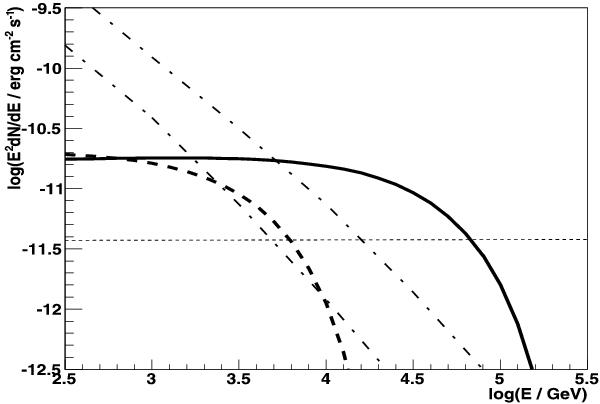Fig. 5

Muon neutrino spectra produced by hadrons which are accelerated at the shocks from the side of the companion star up to energies of 5 PeV (solid curve) and the side of the Eta Carinae star up to energies of 250 TeV (dashed). Hadrons from the side of the Eta Carinae star interact with the matter of dense wind close to the shock region within the binary system. Hadrons from the side of the companion star escape from the shock region into the nebula and interact with the matter of expanding stellar wind and the matter within the nebula expelled in the past. The power law spectrum of hadrons is applied with the spectral index equal to 2. The neutrino spectra are normalized to the hard γ-ray spectrum observed from the Eta Carinae binary system assuming its hadronic origin via pion production. The range of the atmospheric neutrino background (vertical and horizontal) within 1o degree of the source is marked by dot-dashed curves (Lipari 1993). The 1 yr sensitivity of the km2 neutrino detector (expected for the IceCube detector) is marked by the thin dotted line.
Current usage metrics show cumulative count of Article Views (full-text article views including HTML views, PDF and ePub downloads, according to the available data) and Abstracts Views on Vision4Press platform.
Data correspond to usage on the plateform after 2015. The current usage metrics is available 48-96 hours after online publication and is updated daily on week days.
Initial download of the metrics may take a while.


